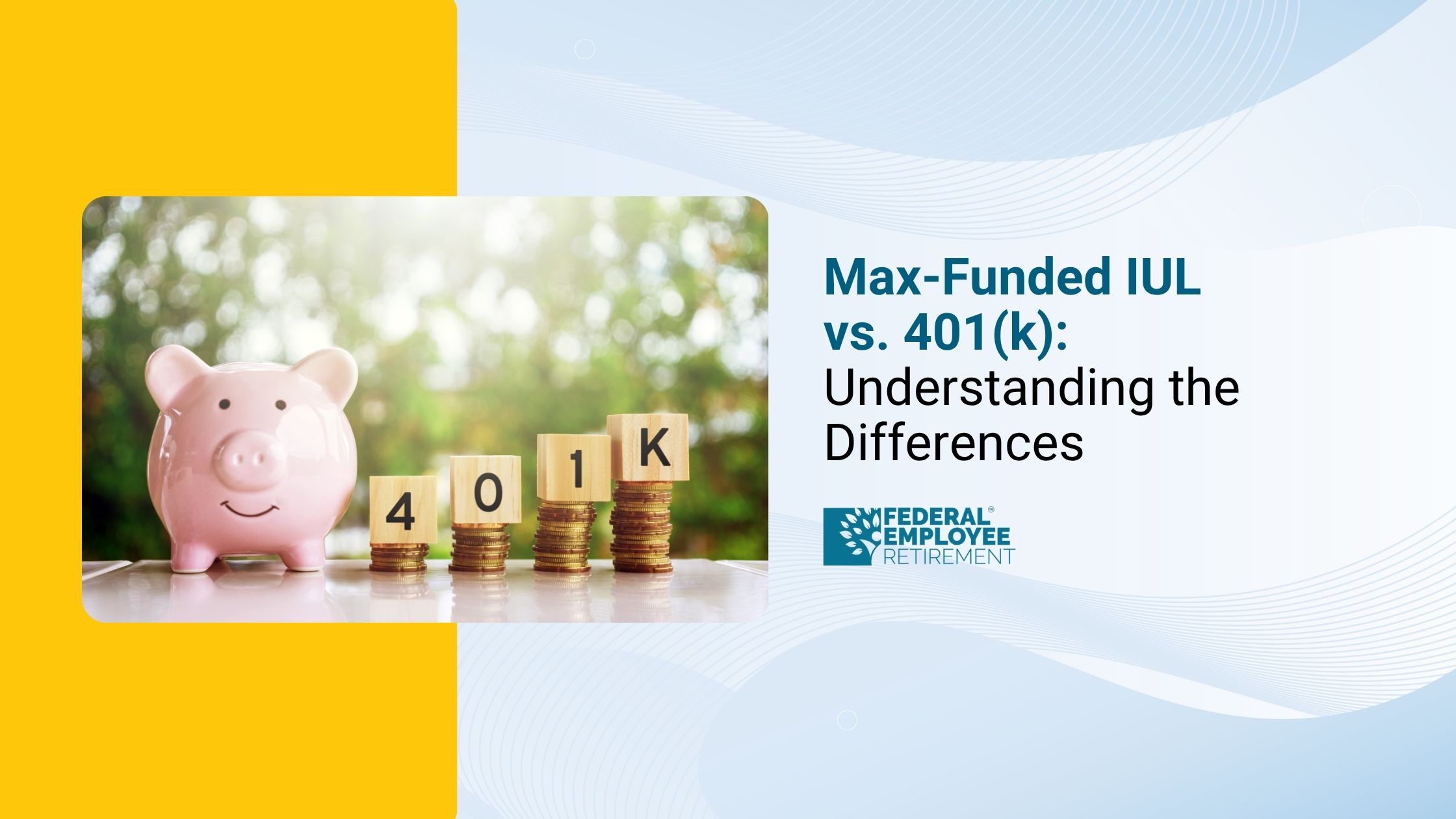You’re not alone; 4,359 federal employees booked their free review.

Can a Charity Be a Beneficiary of an IRA? Yes And Here’s How to Do It the Right Way
When people think about leaving a legacy, they often picture gifts to children or grandchildren. But increasingly, many want at least part of their life’s work to support a cause that matters to them.
That leads to a surprisingly common question:
“Can a charity be a beneficiary of my IRA?”
Yes, a charity can be listed as the beneficiary of a Traditional or Roth IRA.
But the real question most people are trying to understand is:
- Should you do it?
- How does it work?
- What happens to your heirs?
- Are there tax traps to avoid?
This guide answers all of that in clear, plain English with practical examples and advisor-level insights you won’t find on most comparison sites.
Why People Choose to Leave IRA Assets to Charity
There’s a simple reason estate planners so widely recommend this strategy:
IRAs are one of the most tax-efficient assets to give to charity.
When a person inherits a Traditional IRA, every withdrawal becomes taxable income.
But when a charity inherits a Traditional IRA:
- It pays zero income tax
- It receives 100% of the account value
- The gift is generally estate-tax deductible
This means your dollars go further dramatically further when given from a retirement account instead of cash or property.
If you want to benefit both charity and family, giving IRAs to charity and non-retirement assets to heirs often results in the most total value kept in the family.
Also read -
How Naming a Charity as Your IRA Beneficiary Works
The actual process is straightforward:
- Request a beneficiary form from your IRA custodian.
- Enter the charity’s legal name (and tax ID if requested).
- Choose a percentage or specify the charity as the full beneficiary.
- Submit the form and keep a copy with your estate documents.
No probate. No court involvement. No changes to your will.
The IRA moves directly from the custodian to the charity within weeks of your passing.
Key Benefits of Naming a Charity as an IRA Beneficiary
1. Zero tax waste
Traditional IRA assets are “tax-heavy” for individual heirs. Every distribution is taxable.
Charities pay none of it.
2. Preserves more wealth for your family
Giving the IRA to charity and giving taxable brokerage accounts or real property to heirs can significantly reduce the tax burden on your loved ones.
3. Maintains full control while you’re alive
You can:
- Withdraw your own IRA funds
- Change the charity
- Adjust percentages
- Revoke the designation entirely
…all with a simple beneficiary form update.
4. Avoids probate entirely
The IRA transfers automatically. Fast, clean, private.
Important Rules and Pitfalls to Know
Although the strategy is powerful, there are technical rules that most people overlook.
1. Charities don’t get “stretch” rules
A charity is not a “designated beneficiary,” so it cannot stretch withdrawals over life expectancy.
The account is usually paid out quickly, which is fine because the charity owes no tax.
2. Mixing charities and individuals requires caution
If a single IRA includes:
- a charity and
- a person (child/spouse/relative)
…then the payout rules may default to the least favourable (often the charity’s timeline), affecting the human heir.
Solution:
Create separate IRA,s one for the charity, one for family members.
It’s a small administrative step that makes a big difference.
3. Roth IRAs are rarely ideal for charity
A Roth IRA is already tax-free to individual heirs.
Giving a Roth IRA to charity offers no additional tax advantage.
Advisors commonly suggest:
- Traditional IRA → Charity
- Roth IRA → Children/heirs
4. Use the charity’s legal name
If you only list “Humane Society,” your intended organisation might not be clear.
Use:
- Legal organisation name
- Address
- Tax ID (if possible)
This eliminates confusion for the custodian later. Must read charity beneficiary
Real-Life Example
Maria, a federal HR specialist, has:
- A $450,000 Traditional IRA
- $200,000 in savings and brokerage assets
- Two adult children
- A strong commitment to animal welfare
If she leaves everything equally to her children:
- The children will pay taxes on the inherited IRA
- The charity receives nothing
But if she instead designates:
- 50% of the Traditional IRA → The Charity
- Savings & brokerage assets → Her children
Then:
- The charity receives its full portion tax-free
- Her children avoid inheriting a tax-heavy IRA
- More net value stays in the family
A small structural adjustment creates a win-win.
Also read - Solo 401k vs SEP IRA
roth ira contribution limits 2025
When Naming a Charity as an IRA Beneficiary Works Best
This strategy is ideal if:
- You want to support a cause long after you're gone
- Your heirs don’t rely primarily on the IRA for support
- You want to maximise tax efficiency
- You have both retirement and non-retirement assets
- You want simple, probate-free charitable giving
Many federal employees also use this method when they have a robust pension + TSP + Social Security, and the IRA isn’t their primary retirement source.
Checklist: How to Do It Correctly
Before naming a charity as your IRA beneficiary, make sure to:
onfirm the charity’s legal status
Look for a qualified 501(c)(3).
Use precise beneficiary wording
Legal name, address, and tax ID.
Consider separate IRAs
One for charity, one for individuals (avoids unfavourable payout rules).
Review your entire estate plan
Beneficiary forms override willsto ensure consistency.
Revisit designations every 2–3 years
Or after marriage, divorce, births, deaths, or major financial changes.
Advisor’s Insight
In practice, this strategy is most successful when it's part of a bigger plan:
- Use the IRA for charity
- Use taxable or Roth assets for the family
- Keep paperwork updated
- Communicate your intentions with loved ones
You don’t need a complex trust to leave a lasting legacy; sometimes, a thoughtful beneficiary form is enough.
Final Takeaway
Yes, a charity can be a beneficiary of your IRA and in many cases, it’s one of the smartest, most impactful estate-planning decisions you can make.
It allows you to:
- Support causes you care about
- Reduce tax waste
- Preserve more wealth for family
- Simplify your estate plan
Done correctly, it’s a powerful way to turn your savings into meaningful impact long after your lifetime.
FAQs
Can you name a charity as a beneficiary?
Yes. You can name a charity as the beneficiary of your IRA, 401(k), life insurance policy, annuity, or other financial accounts. When a charity is listed as a beneficiary, the organisation receives the asset directly after your death without going through probate. For retirement accounts like Traditional IRAs, this can also be tax-efficient because charities pay no income tax on inherited retirement assets.
Who can be a beneficiary of an IRA?
An IRA beneficiary can be:
- Individuals (spouses, children, relatives, friends)
- Multiple individuals with percentage allocations
- Charities and nonprofit organisations
- Trusts
- Your estate
- Entities like donor-advised funds or private foundations (if allowed by the custodian)
The beneficiary you choose determines how quickly the account must be distributed and how it will be taxed.
Can a donor-advised fund be a beneficiary of an IRA?
Yes. Most IRA custodians allow you to name a donor-advised fund (DAF) as the beneficiary of your IRA. This is a popular strategy because:
- A DAF receives IRA assets tax-free
- Your family or advisors can recommend future charitable grants from the fund
- It provides more long-term giving flexibility than naming a single charity
If you want ongoing charitable impact rather than a one-time gift, a DAF beneficiary designation is often an excellent option.
Can a private foundation be the beneficiary of an IRA?
Yes. A private foundation can be named as the beneficiary of an IRA, and it will receive the assets free from income tax. This is commonly used by individuals who want long-term, family-led philanthropic control.
However, private foundations have stricter administrative requirements than donor-advised funds, so coordinating the designation with your estate attorney is advised to ensure the foundation can accept and manage the IRA distribution properly.
Disclaimer
This information is provided for general educational purposes only and should not be considered financial, tax, investment, or legal advice. Retirement planning and estate strategies, including naming a charity as an IRA beneficiar,y can vary significantly based on individual circumstances, tax status, and jurisdictional rules.
Before making any decisions about IRA beneficiaries, charitable giving, or estate planning, you should consult with a qualified financial advisor, tax professional, or estate-planning attorney.
Federal Pension Advisors and its contributors do not guarantee the accuracy, completeness, or applicability of this information to your personal situation. All examples are for illustrative purposes only.


Get Updated
Subscribe to our weekly updates for the latest on retirement planning, federal benefits, exclusive webinars, and more!
Download Federal Retirement: Step-by-step Checklist
This comprehensive guide will help you understand your federal benefits, optimize your savings, and plan for a comfortable future.



.png)







